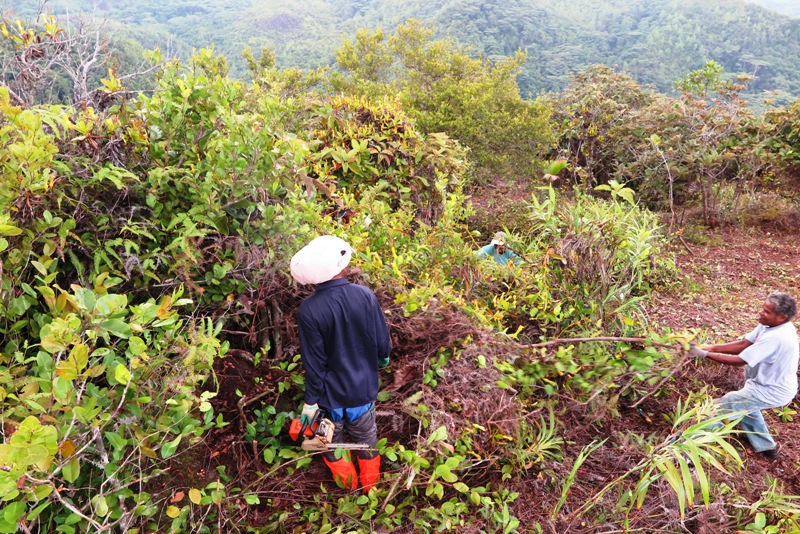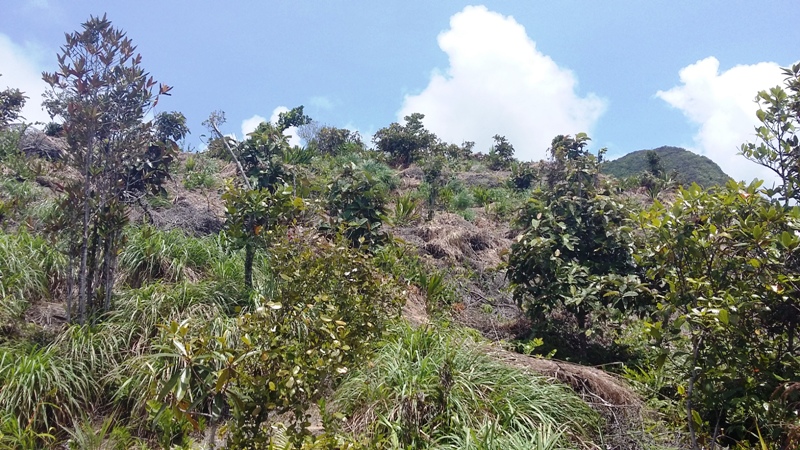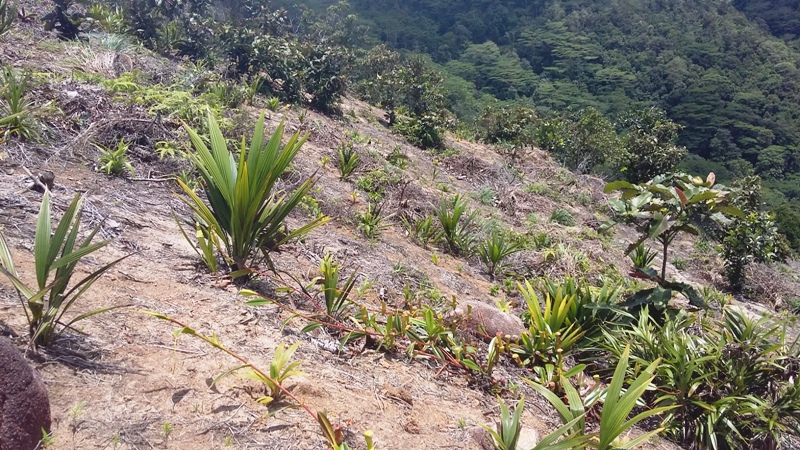SNPA engages in successful long-term research collaboration to protect Seychelles’ biodiversity |30 April 2018
A key goal of the Seychelles National Parks Authority is to protect and conserve Seychelles’ biodiversity for the benefit of the people.
To achieve this, the Seychelles National Parks Authority (SNPA) has teamed up with international and national research collaborators, which has resulted in exciting research and management advances over the last decade.
One of these success stories started in 2007 when the SNPA, then still integrated in the department of environment at Mont Fleuri, was approached by a post-doctoral researcher, Chris Kaiser-Bunbury, to conduct research into the effects of invasive alien species in one of Seychelles’ most iconic, yet most vulnerable ecosystems, the glacis sites. These rocky outcrops are the last strongholds of rich native biodiversity at mid and high-altitudes, harbouring many species that have disappeared elsewhere because of land degradation. Some locations contain almost entirely native species, including many endemics, which occur only in Seychelles. Invasive species and human exploitation threaten the existence of these unique biodiversity-rich ecosystems, which are located within national parks on Mahé, Silhouette and Praslin, and it is the SNPA’s responsibility to preserve and sustainably manage these sites.
Back in 2007, it was a research priority to understand the threats to glacis biodiversity, and why introduced species such as albizia, bwa zonn, kannel and mahogany, which are economically viable species, pose a risk to the survival of native plants and associated animals. We found that native biodiversity is primarily at risk when plants become extremely abundant and invasive, such as the coco plum (prindefrans) or invasive creepers, but if introduced species are controlled through active management, native species can persist.
With a follow-up study in 2009/2010 we established a catalogue of methods outlining best practices of invasive plant removal and potential harmful effects on native plants. These methods have since been applied by the SNPA when removing invasive plants from parts of the national parks and elsewhere. More recently, our research has shown that the restoration of glacis plant communities has a positive effect on native biodiversity and that future conservation projects should consider restoring glacis vegetation while maintaining the sites through regular weeding.
All findings are collaboratively published in high-impact international journals between the SNPA staff and research partners involved in the work. The research is then disseminated nationally via the Seychelles Bureau of Standards, the Ministry of Environment, Energy and Climate Change, local partners, the eNGO community, and news outlets. To maximise the impact, all research findings are translated into management and policy recommendations, and communicated through various education and outlet channels (Wildlife clubs, webpages, social media, field trips etc).
Ten years on, the glacis research collaboration is flourishing. A new four-year research study funded by the German Research Foundation was launched early this year, which is expected to generate further insights in Seychelles’ biodiversity and its conservation.
Glacis biodiversity is only one example of the SNPA’s thriving research collaborations. Other research priorities are addressed as part of the general agreement to work together to advance knowledge of Seychelles’ biodiversity, identify and implement best management methods, and make Seychelles’ biodiversity accessible to the general public through education, communication and outreach.
The benefits of the SNPA’s long-term research collaborations cannot be over-estimated. Positive aspects of the partnership include exchange of knowledge, staff training, funding opportunities, effective evidence-based conservation management, national and international recognition for state-of-the-art research, raised public awareness, and higher tourist interest and visitor rates. A strong collaboration is built on mutual understanding of challenges and constraints; it is rewarding for all partners because of the close involvement in both research and the implementation of research findings.
In the future, the SNPA will intensify efforts to establish and maintain long-term research collaborations by fostering local expertise and strengthening the capacity for independent research within the organisation. Young Seychellois students and graduates from the University of Seychelles (UniSey) provide a great opportunity to further strengthen the in-house research team and contribute to the protection and conservation of Seychelles’ biodiversity.
The accompanying photos show members of the restoration team at work and the restoration sites.







